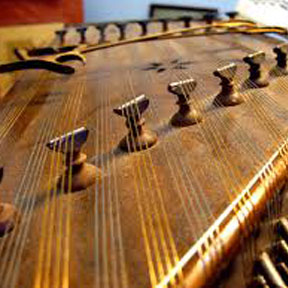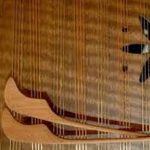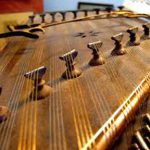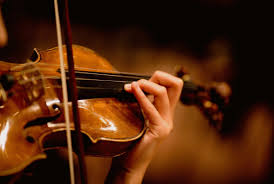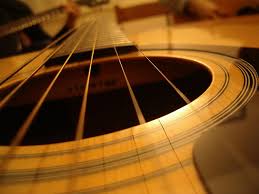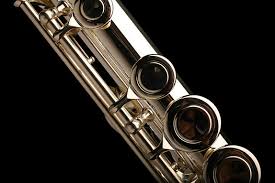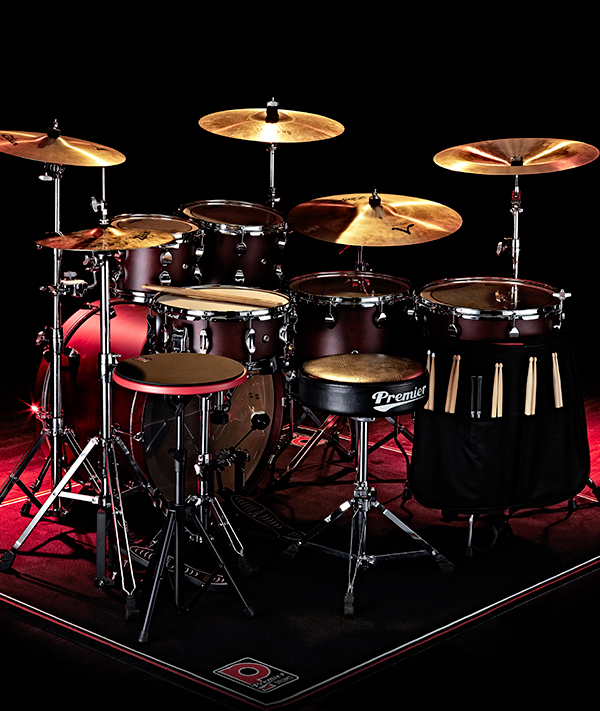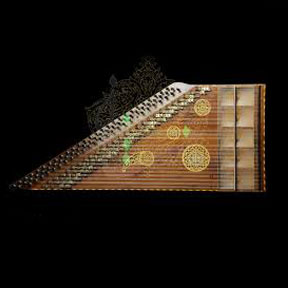History:
The Santur is a trapezoidal, stringed instrument of the hammered dulcimer type, constructed from wood and metal. It is played seated, with the larger side of the instrument positioned horizontally in front of the player. The instrument is struck with two wooden mallets. Like other traditional and local instruments, the Santur comes in various sizes. The standard model discussed here is the 9-bridge “Sol” tuned Santur.
Types of Santur:
Standard Santur (Sol Tuning):
This Santur has two rows of 9 bridges on either side of the soundboard, with the note “Do” corresponding to the “Do” in the diatonic scale. It is the standard model used in educational settings and textbooks.
La Tuning Santur:
Similar to the standard Santur, this variant has two rows of 9 bridges on either side, but the note “Do” corresponds to “Re” in the diatonic scale. It is smaller in size and used for playing a whole step lower, making it suitable for ensemble performances.
Bass Santur:
This Santur has a larger soundbox and metal-wrapped strings of varying thicknesses. It is tuned one octave lower than the standard Santur and is still experimental with limited general use.
Chromatic Santur:
This type of Santur is designed for playing chromatic scales with additional bridges for extra half and quarter tones. It has 30 large and small bridges and is used primarily in larger ensemble performances. It is not as effective for melodic lines.
Bass Chromatic Santur:
Similar to the Chromatic Santur but tuned a perfect fourth lower, it has additional bridges and is notated with the bass clef. It features 35 bridges and is less commonly used in educational contexts.
Performance Capabilities:
The Santur allows for various techniques including double stops, long passages, arpeggios, trills, accents, and sustained notes with delicate mallet work. It is versatile for both solo performances and ensemble settings.
Physical Structure:
Soundbox:
The soundbox of the Santur is a trapezoidal shape consisting of two wooden panels connected by side frames. Typically, the larger side is about 90 cm and the smaller side is 36 cm, with a height of 6 cm and a base of 26 cm.
Top Panel:
This panel is made from high-quality wood and features two sound holes and two rows of 9 bridges on each side for string passage.
Bridges:
Small cylindrical wooden pieces, about 2 cm high and 1.5 cm in diameter, are placed on the top panel. There are 18 bridges in total, 9 on each side. The bridges have shallow grooves to accommodate the strings, and the height of the bridges on the right side is typically 2 mm shorter than those on the left side.
Bridge Wire:
Each bridge has a metal wire, about 1.5 cm long and 2 mm in diameter, which prevents the strings from contacting the wood, thus producing a clearer sound.
Pegs:
The Santur has 72 metal pegs arranged in four rows of 18, positioned on the right side of the body. These pegs are cylindrical and sometimes cone-shaped, with a hole for string winding.
Tuning Key:
A metal tool with a wooden handle, used to adjust the tension of the strings.
Damper (Sheytan):
Two thin, long pieces of wood with grooves for the strings are attached to the sides of the top panel. They help in tuning and maintaining string spacing.
String Holders:
72 small metal pieces (called “sachmeh”) are located on the left side of the body. Each string is tied around these holders.
Strings and Tuning:
The Santur typically has 72 strings, with 36 strings on the right side (usually brass or bronze) and 36 on the left side (usually steel). The range of the Santur covers slightly more than three octaves, and different tunings can be applied based on the player’s needs.
Notation:
The Santur is notated using the treble clef, one octave higher than the notation for plucked string instruments.
Mallets:
The Santur is played with two wooden mallets, each about 22 cm long. The mallets consist of:
A circular ring that the player holds with their thumb, index, and middle fingers.
A slender shaft connecting the ring to the striking end.
The striking end is slightly broader and may be covered with felt to produce a warmer sound. Ideal materials for mallets include walnut, boxwood, or poplar.

